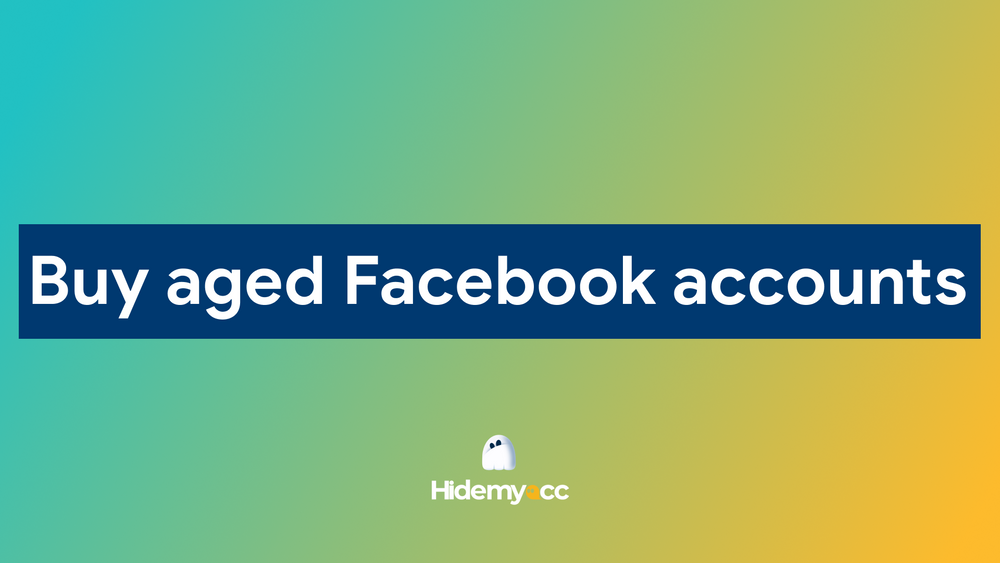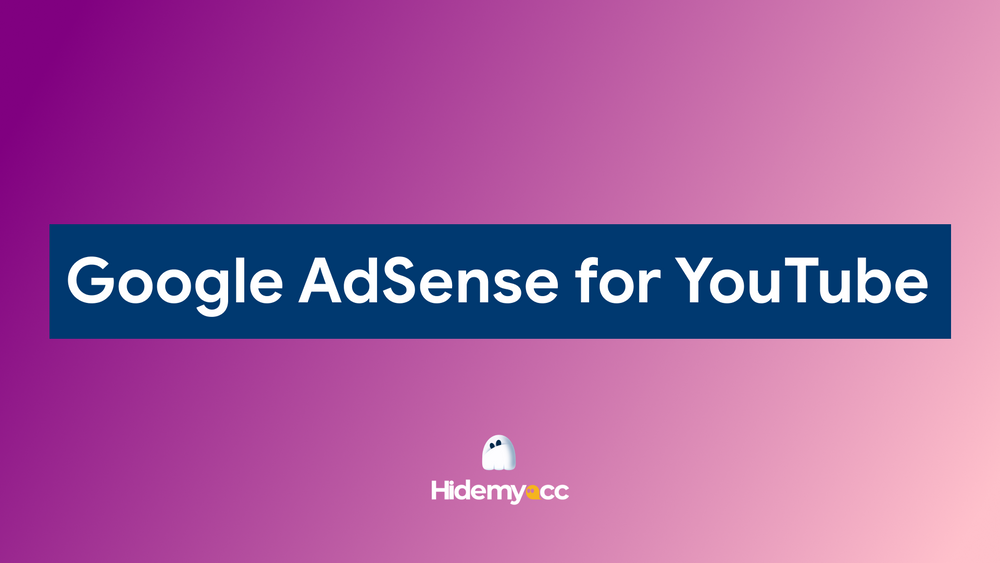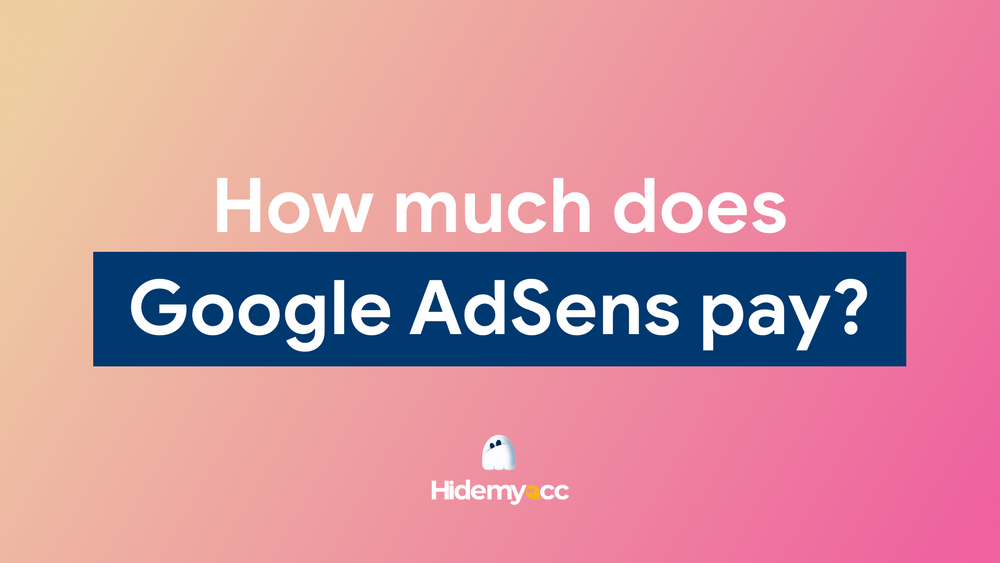Wondering what YouTube pays per view? The truth is there’s no fixed rate but understanding metrics like CPM and RPM, and knowing what boosts earnings, can make all the difference. In this guide, Hidemyacc breaks down how YouTube’s revenue model works, what factors affect pay-per-view rates, and smart strategies to maximize each view.
1. How much does YouTube pay per view?
If you have ever wondered how much you really earn for each view on YouTube, the answer is not a fixed amount. On average, creators can expect to get between $0.002 and $0.025 per view when ads are shown. This means for every 1,000 views that display ads properly, you might earn about $2 to $25. These figures are rough estimates because what you actually receive depends on many different factors.
Keep in mind that not every view on your channel generates money. To earn, ads must run while someone watches, and viewers need to watch them long enough. Many people use ad blockers or skip ads quickly, which means those views do not add to your earnings. Another key point is where your viewers live.
For instance, views from the United States, Canada, or Western Europe usually pay more than views from countries with lower advertising budgets. This is why two videos with the same view count can produce very different income.
>>> How to increase views on YouTube? Tips, tricks & free method
2. How YouTube's payment system works
Before you learn how to increase what you earn, it helps to understand how YouTube turns views into real money for creators. Here is a simple look at how it works.
2.1. YouTube makes money through ads
To really know how much YouTube pays per view, it helps to see how the payment process works from start to finish. YouTube makes most of its money through ads that show up before, during, or beside videos. Advertisers pay YouTube to reach viewers, and YouTube then shares a part of that money with the creators. Typically, creators receive about 55 percent of the ad revenue, while YouTube keeps the rest to maintain the platform and attract advertisers.
2.2. What is CPM and RPM?
Two key terms help you understand your earnings: CPM and RPM. CPM means “Cost Per Mille” or cost per thousand ad impressions. This is what advertisers are willing to pay for their ads to appear a thousand times.
RPM, on the other hand, means “Revenue Per Mille” and shows how much money you actually earn for every thousand views on your channel, after YouTube takes its share. Your RPM usually ends up lower than your CPM because it includes unpaid views too.
2.3. Why CPM and RPM vary so much
Your CPM and RPM can change daily based on who watches your videos, what ads appear, and when. For example, a channel about finance might attract high-paying ads, while a general vlog may get lower rates.
The type of ads shown also matters. Non-skippable video ads usually pay more than skippable ones, bumper ads, or simple banner ads. Longer videos often allow more ad slots, increasing total revenue. Seasonality can push rates up too, which explains why two channels with similar views can earn very different amounts.
3. Factors that affect your YouTube earnings
Even when your view count looks steady, your income might still go up or down. This is because some factors directly shape how much YouTube pays per view. Knowing these helps you plan your content and grow your channel wisely.
3.1. Where your viewers live
Audience location is one of the biggest reasons CPM changes. Advertisers spend more to reach viewers in the United States, Canada, Australia, or Western Europe. If most of your audience comes from these places, you usually earn more for the same number of views.
3.2. The topic of your content
Your niche can raise or lower your earnings. Some topics, like finance, insurance, or tech, attract brands that pay more for ad space. Fun or general content might get lower rates. Picking a profitable topic can make each view more valuable.
3.3. The length of your videos
Longer videos allow you to insert more ads. Once your video is over eight minutes long, you can add mid-roll ads, which boost your overall income. Short videos can still do well if they go viral, but longer videos often bring steady revenue over time.
3.4. The season and trends
Your income can rise during seasons when companies spend more on ads, like Black Friday or Christmas. At other times of the year, ad budgets shrink, and so does your CPM. Keeping an eye on trends helps you plan uploads smartly.
3.5. Audience engagement and device use
How viewers interact with your content matters a lot. Videos that keep people watching to the end, liking, commenting, or clicking on ads usually earn more. Also, people watching on computers often see longer ads than mobile viewers, which can slightly raise your revenue per view. Good engagement plus a loyal audience means more money for every thousand views.
>>> How to get 1,000 views on YouTube for free without ads or bots
4. Other ways to make money on YouTube
Relying only on ads is common when starting out, but it’s smart to build extra income streams. Many successful creators earn more from other sources than from ads alone. Here are some proven ways to add more money to your channel.
4.1. Channel memberships and super chat
If your channel qualifies, you can turn on memberships. Fans pay a monthly fee for perks like badges, exclusive posts, or live streams. During live streams, Super Chat lets viewers pay to highlight their messages, which brings in extra cash and makes live chats more fun.
4.2. Merchandise and product sales
Selling your own merchandise is another great option. Many creators design shirts, mugs, or digital products and promote them under their videos. YouTube even has a merch shelf feature for eligible channels, making it easier to showcase your products directly to your audience.
4.3. Sponsorships and brand deals
Brands often pay creators to feature their products in videos. Sponsored content can pay well, especially if your channel reaches a specific audience that brands want to target. The key is to work with brands that match your style so that your viewers trust your recommendations.
4.4. Affiliate marketing
You can also recommend products and earn a commission for each sale through an affiliate link. Many creators place these links in video descriptions. This works well for product reviews or tutorials, and it can add a steady side income with minimal extra work.
4.5. Crowdfunding and fan support
Some creators use crowdfunding platforms like Patreon to get monthly support from fans. Others may receive one-time donations through tools like Buy Me a Coffee. This kind of direct support helps you stay independent and keep creating without relying too much on ad revenue.
>>> YouTube shorts monetization: How to maximize your earnings? Full, detailed guide to get started
5. Tips to maximize your revenue
Knowing how much YouTube pays per view is only half the battle. Turning each view into the most money possible takes smart planning and good habits. Here are practical ways to boost your income without feeling overwhelmed.
5.1. Make videos people want to watch to the end
YouTube rewards videos that keep viewers watching longer. High watch time signals to YouTube that your content is valuable, which can help your videos reach more people. Write clear titles, create engaging openings, and deliver what your thumbnail promises so viewers stay until the last second.
5.2. Choose topics that attract high-paying ads
Not all niches are equal. If you can, focus on topics that advertisers spend more money on, like personal finance, tech, or education. It doesn’t mean you have to change your passion, but understanding your niche’s earning potential helps you plan videos that pay better per view.
5.3. Publish longer videos when possible
Videos over eight minutes allow mid-roll ads, which means more ad breaks and more ad revenue. As long as you can keep the content interesting, making slightly longer videos is an easy way to raise your total earnings per view.
5.4. Optimize your video SEO
Use clear titles with relevant keywords, add detailed descriptions, and choose eye-catching thumbnails. Good SEO helps your videos appear in search results and suggested videos, bringing in more viewers who are likely to watch ads.
5.5. Engage with your audience
Reply to comments, ask viewers to like and subscribe, and encourage sharing. Higher engagement not only builds loyalty but also helps your videos rank better. Loyal viewers watch longer and trust your recommendations, which also helps if you use memberships or affiliate links.
6. Handy tools and resources for creators
Using the right tools makes it much easier to understand how much YouTube pays per view and how to grow your channel more effectively. Here are some essentials every creator should know about:
6.1. YouTube Studio
This is your main control center for everything related to your channel. YouTube Studio lets you track how many people watch your videos, where they come from, how long they stay, and how much money each video makes. It also shows which videos perform best and when your audience is most active. Checking your dashboard regularly helps you spot trends and improve future uploads.
6.2. TubeBuddy and VidIQ
These are popular browser extensions trusted by many creators. TubeBuddy and VidIQ help you find the right keywords, analyze what’s working on your competitors’ channels, and suggest better titles and thumbnails to boost clicks. Both tools also offer checklists and scorecards to help you follow YouTube’s best practices. Using them saves time and can increase your chances of ranking higher in search results.
6.3. YouTube money calculators
Free YouTube money calculators give you a quick way to estimate your earnings before you even upload. You enter the average number of views you expect and your estimated RPM, and the tool shows how much you could make. While they can’t predict the exact amount, they help you set realistic goals and compare which video ideas might be most profitable. Many trusted blogging sites for creators offer these calculators online.
6.4. Creator communities and blogs
Stay updated by reading trusted blogs like the YouTube Official Blog, TubeBuddy’s blog, or VidIQ’s Academy. You can also join online communities and forums such as Reddit’s r/NewTubers or the YouTube Help Community, where thousands of creators share real experiences, ask questions, and give advice. Learning from others helps you avoid common mistakes and discover new ways to grow faster and earn more.
6.5. Hidemyacc for managing multiple channels
Hidemyacc is an antidetect browser trusted by marketers and content creators who need a secure way to manage multiple online accounts on the same computer. Unlike regular browsers, it lets you create separate browser profiles, each with a unique fingerprint and environment, so platforms like YouTube cannot easily link your activities.
For YouTube creators, this means you can run different channels, test new content ideas, or manage backup accounts without the risk of blocks or detection. Hidemyacc keeps each channel isolated, making it much safer and more convenient to grow multiple projects at the same time without mixing cookies or login data.
7. Conclusion
Understanding how much YouTube pays per view is an important step for any creator who wants to turn videos into a real income stream. While the pay per view can change based on many factors, knowing how the system works helps you plan better and avoid surprises.
Focus on making content your audience loves, keep your viewers engaged, and use smart tools like YouTube Studio and Hidemyacc to manage your channels safely and efficiently. With the right strategy and steady effort, your earnings can grow far beyond what ads alone bring in. Keep learning, stay consistent, and enjoy building your channel one view at a time.
- Why was my YouTube account suspended? 7 common reasons and how to appeal
- How to unblock YouTube on Chrome: 7 simple and effective ways
- Bypass proxy YouTube: How to access unrestricted content
8. FAQ
1. How much money does 1 million YouTube views make?
Earnings for 1 million views usually range from $2,000 to $5,000, depending on your audience’s location, the type of ads shown, and how engaged viewers are.2. How much do you get paid per 1,000 views on YouTube?
Most creators earn between $2 and $25 for every 1,000 views that display ads properly. The exact number depends on factors like CPM, content niche, and viewer location.3. How much money is 100K views on YouTube?
With 100,000 views, you can expect to earn about $200 to $2,500. The range is wide because it changes with your channel’s topic and your audience.4. How much do 70k views on YouTube pay?
For 70,000 views, your earnings might fall between $140 and $1,750, influenced by the same factors that affect CPM and RPM.5. How much is 500 thousand views on YouTube?
Half a million views could bring in roughly $1,000 to $3,000, again varying by niche, audience location, and season.6. Who is the highest paid YouTuber?
MrBeast (Jimmy Donaldson) is widely known as one of the highest-paid YouTubers, earning millions each year from ads, sponsorships, and his own products.7. What is the salary of a YouTuber who has 1 million subscribers?
A YouTuber with 1 million subscribers might earn anywhere from $5,000 to $25,000 per month from ads alone, not counting income from sponsorships, merchandise, or memberships.8. Does YouTube pay for Shorts?
Yes. YouTube pays creators for Shorts through its Shorts revenue sharing program, where ad revenue from Shorts is split with eligible creators based on views and engagement.





